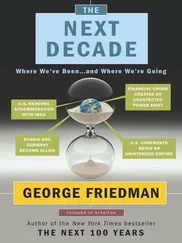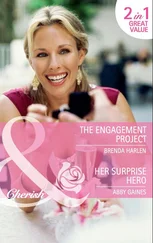SELF-ASSESSMENT: SOCIAL SUPPORT NETWORK
Answer each of the questions with your best estimate or assessment.
1. How often in a typical month do you talk to a lot of different people at parties?
Never
1
2
3
4 or more times
2. How often in the past month have you participated in group meetings or activities (other than work meetings)?
Never
1
2
3
4 or more times
3. Of your friends, how many could you definitely call on for help if you needed it?
None
1
2
3
4 or more
4. How many relatives do you see or hear from at least once per month?
None
1
2
3
4 or more
5. How many people in your life accept you totally, just as you are?
None
1
2
3
4 or more
6. How often in the past month have friends or relatives made you feel loved and cared for?
Never
1
2
3
4 or more times
7. How many people can you count on to help you feel better when you are down in the dumps?
None
1
2
3
4 or more
8. How often in the past month have others talked to you about important decisions they need to make?
Never
1
2
3
4 or more times
9. How often in the past week have you helped others (beyond your partner or children) with tasks they needed to do?
None
1
2
3
4 or more times
10. How many people—including your children, parents, friends, and neighbors—rely on you to do something important for them every day?
None
1
2
3
4 or more
To calculate your overall score, ignore your answer to question 1, which is an irrelevant filler item, and add up your scores for questions 2 through 10. (Give yourself a 0 for each “none” or “never” response you circled, and a 4 for each “4 or more.”) The total will fall somewhere between 0 (never/none) and 36. Although people vary widely in both social network size and their perceptions of how beneficial their social support networks are, we don’t expect anyone to score a 0 on this scale. In fact, scoring below 7 is very unusual. Most people score at least in the double digits, and higher numbers (such as above 25) represent the strong social support that serves to promote longevity. But even more important than your overall score is your score on three subscales.
As we will see, items 2, 3, and 4 together assess the most important element, namely whether you have a large social network. Items 8, 9, and 10 assess the next important element, whether you help and provide support for others. Items 5, 6, and 7 assess the least important aspect of social support—whether you feel that others are there for you. In fact, we found that this last factor is overrated in terms of its health value. Feelings were not the key.
As we noted, Linda had a large social network. With her extended family nearby, she saw most of her relatives at least once a month. She also had a lot of friends. She saw two of these friends regularly in her congregation, and she talked to four other friends about health and career matters.
James felt socially secure and supported—perceiving that he could count on his now-grown children to help with daily tasks when needed. He felt they were genuinely interested in listening to him. He had some close friends with whom he would play cards, especially when he was worried or facing an important decision. In contrast to James, John’s friendships tended to center around his career, though he did keep in touch with his wartime buddies.
Barbara, the social worker and overall humanist, had a different kind of social support—that which comes from helping others. She had good social relations not only because her job involved connecting to others, but because she also frequently assisted her friends and her church in organizing community service projects. What she loved most about her congregation was that it gave her the chance to help her friends and neighbors directly, as well as to reach out to those in need beyond her immediate social circle. We were now getting at the heart of the question to which our religion findings had pointed us: What aspects of social support matter most when it comes to longevity? Which pieces of congregational connections are most relevant to long life?
Social Support and Long Life
To determine which aspects of social ties were prominent on the path to long life, we examined how the various aspects of social support at around retirement age were related to mortality risk over the ensuing two decades. We figured that if a Terman participant sincerely felt that he or she had friends and relatives to count on when having a hard time then that person would be healthier. Those who felt very loved and cared for, we predicted, would live the longest. Surprise: our prediction was wrong. Although other studies have shown that people who feel loved and cared for will report a better sense of well-being—they feel better —we did not find that it helped much for living a long life.
What about focusing on the size of social networks rather than emphasizing only feelings? Does having regular contact with a large number of close, comfortable friends make a difference? A clear finding was that those who had a large social network lived longer. Just as we had seen in our studies of religiosity, social networks matter a lot.
Beyond social network size, the clearest benefit of social relationships came from helping others. Those who helped their friends and neighbors, advising and caring for others, tended to live to old age. Those like Barbara, who had large networks and good social relations because they helped others, were reaping a real benefit in terms of their longevity. 80 80 Last year, in a funny episode, we were approached by a confused insect specialist from another university who wanted advice on how to set up a computer model for social networking based on the typical behaviors of those most social of insects, termites. We had to explain to him that we don’t study the insect termites but the human ones—Terman’s “Termites.” But we were able to add that just as insect termites help ensure the survival of their colonies through cooperation and self-sacrifice, human “Termites” in social networks who lend a hand to others are helping to ensure their own survival.
Over three hundred years ago Daniel Defoe, famous for his novel Robinson Crusoe , asserted, “The best of men cannot suspend their fate: The good die early, and the bad die late.” 81 81 The Defoe quote comes from The Character of the Late Dr. Samuel Annesley, by Way of Elegy (London: E. Whitlock, 1697).
We did not find this to be true at all, instead finding that many of the most agreeable, thoughtful, and helpful Terman subjects, including Linda, were among the longest living.
That said, we saw again and again that it was not the feel-good aspects of having friends that was associated with long life. Rather, it was the more hands-on pieces that mattered most—being in contact with family members, doing things with friends, and helping others. When taken in total with the many other characteristics of long life—being conscientious, being in a good marriage, having healthy habits, and working hard in a successful career—Defoe’s adage really crumbles. While his catchy saying has become a truism, repeated endlessly over the years in movies, songs, and philosophies, there’s no real evidence that the good die young. In fact, although there are always some exceptions (which are therefore notable), generally speaking, it’s the good ones who can actually help shape their fate; the bad die early, and the good do great.
Читать дальше











